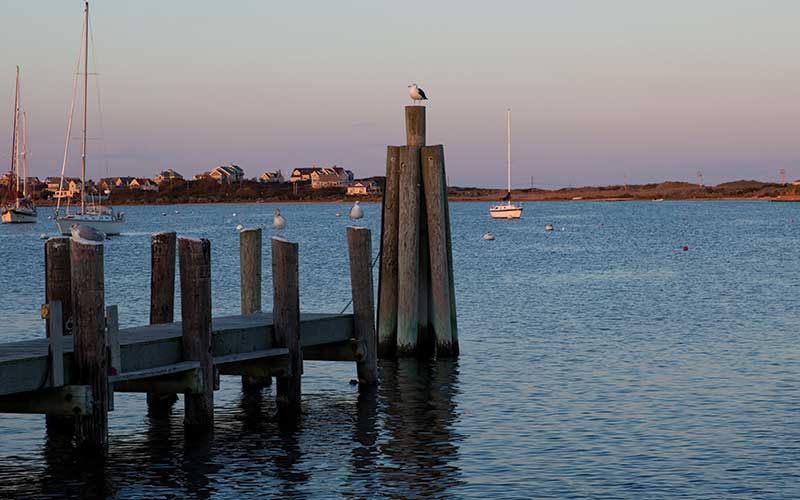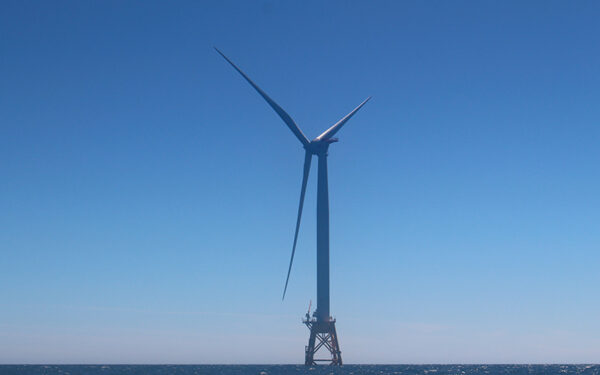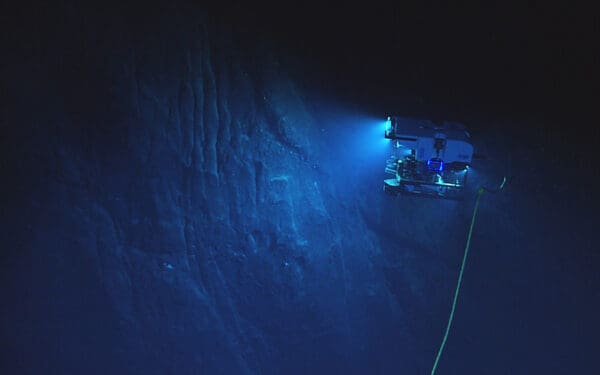
Ocean planning ensures that New Englanders can capitalize on economic opportunities, but not at the expense of the area’s natural beauty and the places people live and play. Photo: Shutterstock.
Sometimes, a good idea takes a long time to come to fruition. A very long time. It also takes vision, tenacity, and skill.
Take ocean planning – the idea that we can be smarter and more coordinated about how we collectively use, manage, and protect limited ocean resources. When the Northeast Regional Ocean Plan was approved for New England’s federal waters last year, it capped off a journey for CLF that began nearly two decades ago.
In 2000, current Vice President for Oceans Priscilla Brooks was a staff economist for CLF, working alongside colleague Peter Shelley to push for protected areas in the ocean. The goal was to safeguard unique habitats from commercial activities while giving overfished species, like cod, room to recover. Creating such protected areas was itself groundbreaking 20 years ago, but even as Brooks and Shelley championed that idea, they were growing increasingly concerned by the rising demand for new industrial uses of ocean areas.
The Cape Wind project had just been proposed, various waste disposal sites designated, and a gas pipeline built from Salem to Boston Harbor. Waiting in the wings were more offshore projects, including two liquefied natural gas terminals, additional wind facilities, and sand and gravel mining.
“States lacked a good process for how decisions were made and projects sited,” says Brooks. “Proposals were looked at on a site-by-site basis, leaving regulators reacting to proposed new uses rather than proactively preparing for them.” That myopic approach threatened the very places CLF most wanted to protect.
So Brooks and Shelley advocated for a new idea: Planning for the ocean. While planning for specific uses is taken for granted on land, 20 years ago it was a new concept for marine resources. “We wanted a new way of looking at our ocean,” recalls Brooks today. “We needed to stop managing project by project or industry by industry.”
Instead, they supported a more holistic way of managing ocean areas, so that New Englanders could capitalize on the ocean’s many economic and recreational benefits and protect marine life and habitats at the same time.
Such a literal sea change in the way ocean resources are managed would require support from the top levels of state government, so Brooks and CLF’s allies started working behind the scenes, talking about the idea with those they knew would be open to it. A daylong conference run by the Massachusetts Office of Coastal Zone Management soon brought the idea of ocean planning to its widest audience of policymakers yet, laying the groundwork for the creation of a state-level Ocean Management Task Force in 2003. Its assignment: to review the Commonwealth’s ocean management regime and make recommendations for necessary changes.
As a member of the task force, alongside state representatives, municipal leaders, commercial fishermen, and others, Brooks was now in a position to help impact the state’s policy on ocean planning. It took a year of analysis and discussion, but by early 2004, the group had released detailed set of recommendations, including one for the creation of a comprehensive law to require a plan for managing Massachusetts’s ocean waters.
It took another four years – and intensive negotiations among legislators – before that law, the Massachusetts Ocean Act, was signed by then-Governor Deval Patrick. As development of the plan got underway, Brooks once again sat at the table with decision makers. Finally, 10 years after Brooks and Shelley helped to put the idea of “ocean planning” on the radar, the nation’s first state ocean plan was approved.
But well before the ink was dry, CLF and its allies were thinking bigger.
“States manage only up to three miles out to sea from their coastlines,” she says. “The rest – out to 200 miles – is in federal jurisdiction, so we knew we needed to work on a broader management plan and that it would need a mandate from the federal government.”
It was 2008, Barack Obama had just been elected president, and the time was right for federal action. It was clear that New England and the country as a whole needed ocean planning to preemptively avert ocean sprawl and Massachusetts was laying down a national model. The Obama administration was paying attention. In 2010, it released its landmark National Ocean Policy, calling for regional ocean plans to be created across the country.
With so much groundwork already laid in New England (Rhode Island had followed Massachusetts with its own coastal management plan in 2010), it made sense for the Northeast to be the first region out of the gates. By 2012, a Regional Planning Body had been convened, made up of representatives from the states, tribes, federal agencies, and fisheries managers. CLF joined a diverse set of stakeholders – including commercial and recreational fishermen, renewable energy developers, marine scientists, surfers, and others – involved in the intense planning process.
After four years of thorough study, dialog, and public input, the Northeast Regional Ocean Plan was approved at the end of 2016. “This plan is a game changer, created largely by New Englanders for New Englanders,” says Brooks. “Our region has committed, on every level, to being smarter about how we manage and protect our ocean for the benefit of our coastal communities, marine life, and businesses.”
Any plan is only as good as its implementation, however, and that is Brooks’s primary concern today. A missing piece of the plan is the identification of important ecological areas that need protection, which is important in decision making. “We need to ensure that state, federal, and tribal members of the regional ocean planning body move forward with identifying those areas, as they are critical to the overall health of New England’s ocean,” Brooks says. CLF will also be involved in ocean development planning and permitting processes to ensure decision making is based on the best available science, stakeholders are meaningfully engaged, and state and
federal agencies coordinate effectively.
“Our region knows how to come together and make things happen,” she says. “We’ve helped to catalyze a movement around the country, and our ocean and coastal economy will be healthier because of it.”



